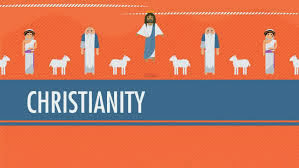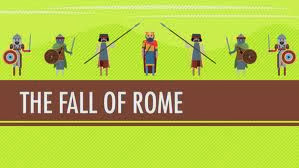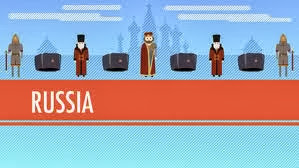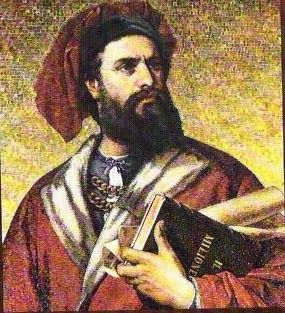These are the targets for chapter 9...they are sloppy and will be fixed over the weekend.
Hooray 4 day weekend....Geronimo!
World History AP
Unit 3 AN AGE OF ACCELERATING CONNECTIONS 500–1500
Chapter 9 East Asian Connections, 300-1300
★ Explain the development of China as “superpower” among the third-wave civilizations.
★ Analyze the impact of China’s deep influence on East Asia.
★ Describe the ways in which interaction with other peoples had an impact on China.
★ Examine modern assumptions about China and determine the root of that perception.
1. In what ways did Tang and Song dynasty China resemble the classical Han dynasty period, and in what ways had
2. Based on this chapter, how would you respond to the idea that China was a self-contained or isolated civilization?
3. In what different ways did nearby peoples experience their giant Chinese neighbor, and how did they respond to it?
4. How can you explain the changing fortunes of Buddhism in China?
5. How did China influence the world beyond East Asia? How was China itself transformed by its encounters with a
1. Why are the centuries of the Tang and Song dynasties in China sometimes referred to as a “golden age”?
2. In what ways did women’s lives change during the Tang and Song dynasties?
3. How did the Chinese and their nomadic neighbors to the north view each other?
4. What assumptions underlay the tribute system?
5. How did the tribute system in practice differ from the ideal Chinese understanding of its operation?
6. In what ways did China and the nomads influence each other?
7. In what different ways did Korea, Vietnam, and Japan experience and respond to Chinese influence?
8. In what different ways did Japanese and Korean women experience the pressures of Confucian orthodoxy?
9. In what ways did China participate in the world of Eurasian commerce and exchange, and with what outcomes?
10. What facilitated the rooting of Buddhism within China?
11. What were the major sources of opposition to Buddhism within China?
An Lushan: Foreign-born general who led a major revolt against the Tang dynasty in 755–763, perhaps provoking China’s
turn to xenophobia. (pron. ahn loo-shahn)
bushido: The “way of the warrior,” referring to the military virtues of the Japanese samurai, including bravery, loyalty, and
an emphasis on death over surrender. (pron. boo-SHEE-doh)
Chinese Buddhism: Buddhism was China’s only large-scale cultural borrowing before the twentieth century;
Buddhism entered China from India in the first and second centuries c.e. but only became popular in 300–800 c.e. through a
series of cultural accommodations. At first supported by the state, Buddhism suffered persecution during the ninth
century but continued to play a role in Chinese society.
chu nom: A variation of Chinese writing developed in Vietnam that became the basis for an independent national
literature; “southern script.” (pron. choo nom)
foot binding: Chinese practice of tightly wrapping girls’ feet to keep them small, begun in the Tang dynasty; an emphasis
on small size and delicacy was central to views of female beauty.
hangul: A phonetic alphabet developed in Korea in the fifteenth century (pron. HAHN-gool)
Hangzhou: China’s capital during the Song dynasty, with a population of more than a million people. (pron. hong-joe)
Heian: Japan’s second capital city (now known as Kyoto), modeled on the Chinese capital of Chang’an; also used to
describe the period of Japanese history from 794 to 1192 c.e. (pron. HIGH-an)
Jurchen: A nomadic people who established a state that included parts of northern China (1115–1234).
kami: Sacred spirits of Japan, whether ancestors or natural phenomena; their worship much later came to be called Shinto.
Khitan: A nomadic people who established a state that included parts of northern China (907–1125). (pron. kee-tahn)
Koryo: Korean dynasty (918–1392). (pron. KAW-ree-oh)
Kumsong: The capital of Korea in the medieval era, modeled on the Chinese capital of Chang’an. (pron. KOOM-song)
Murasaki Shikibu: Perhaps Japan’s greatest author, a woman active at the Heian court who is best known for The Tale of
Genji, which she wrote around 1000 c.e. (pron. moo-rah-SAH-kee shee-KEE-boo)
Nara: Japan’s first capital city, modeled on the Chinese capital of Chang’an. (pron. NAH-rah)
Neo-Confucianism: A philosophy that emerged in Song-dynasty China; it revived Confucian thinking while adding in
Pure Land Buddhism: A school of Buddhism that proved to be immensely popular in China; emphasized salvation by faith
samurai: Members of Japan’s warrior class, which developed as political power became increasingly decentralized. (pron.
Shotoku Taishi: Japanese statesman (572–622) who launched the drive to make Japan into a centralized bureaucratic
state modeled on China; he is best known for the Seventeen Article Constitution, which lays out the principles of this
reform. (pron. show-TOE-koo tie-EESH-ah)
Silla dynasty: The first ruling dynasty to bring a measure of political unity to the Korean peninsula (688–900). (pron. SILL-ah
Song dynasty economic revolution: A major economic quickening that took place in China under the Song dynasty
(960–1279); marked by rapid population growth, urbanization, economic specialization, the development of an
immense network of internal waterways, and a great increase in industrial production and innovation. (pron. soong)
Sui dynasty: Ruling dynasty of China (581–618) that effectively reunited the country after several centuries of political
Tang dynasty: Ruling dynasty of China from 618 to 907; noted for its openness to foreign cultural influences. (pron. tahng)
tanka: Highly stylized form of Japanese poetry that has been a favored means of expression for centuries. (pron.
tribute system: Chinese method of dealing with foreign lands and peoples that assumed the subordination of all
non-Chinese authorities and required the payment of tribute—produce of value from their countries—to the Chinese
emperor (although the Chinese gifts given in return were often much more valuable).
Trung sisters: Two Vietnamese sisters who launched a major revolt against the Chinese presence in Vietnam in 39 c.e.; the
rebellion was crushed and the sisters committed suicide, but they remained symbols of Vietnamese resistance to China
Uighurs: Turkic empire of the steppes; flourished in the eighth century c.e. (pron. WEE-gers)
Wendi, Emperor: Sui emperor (r. 581–604) who particularly patronized Buddhism. (pron. WEN-dee)
Xiongnu: Major nomadic confederacy that was established ca. 200 b.c.e. and eventually reached from Manchuria to Central
Yi: Korean dynasty (1392–1910). (pron. yee)

















